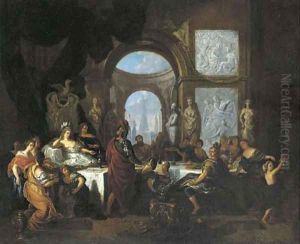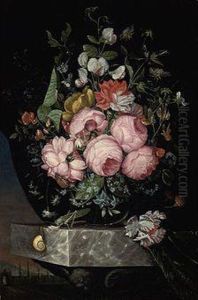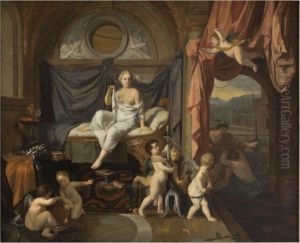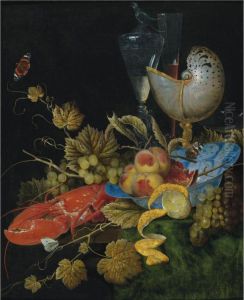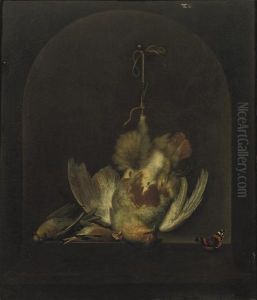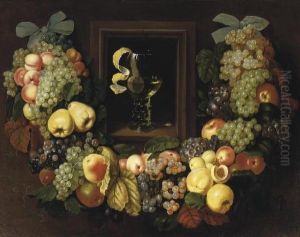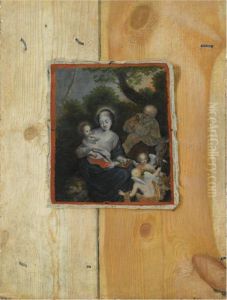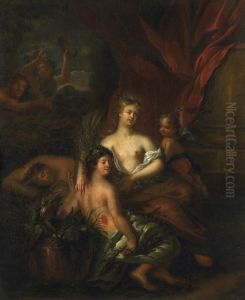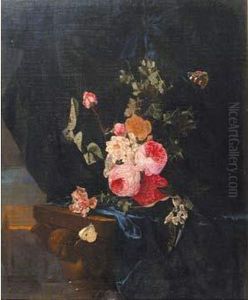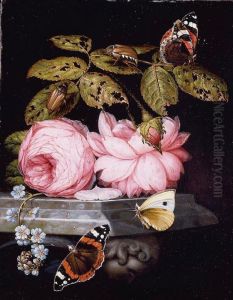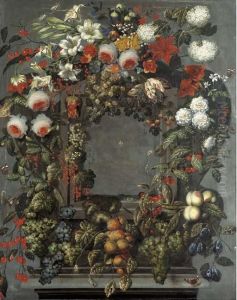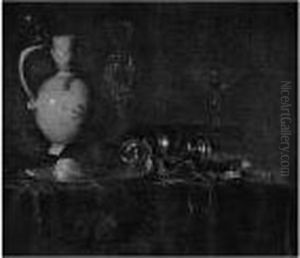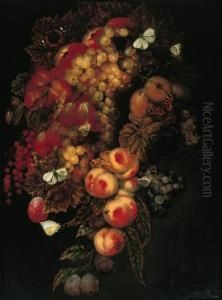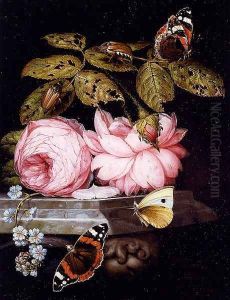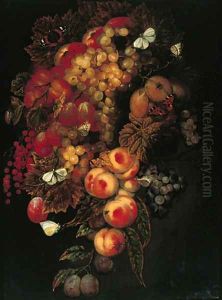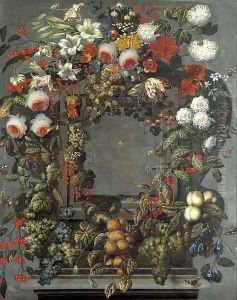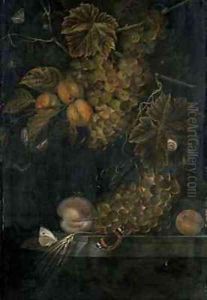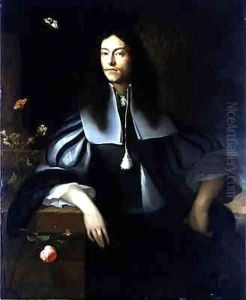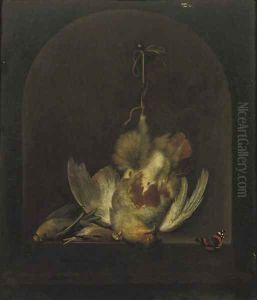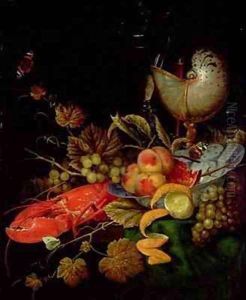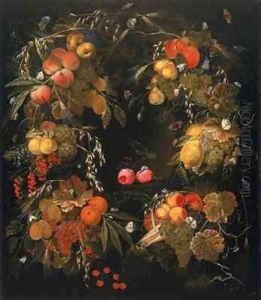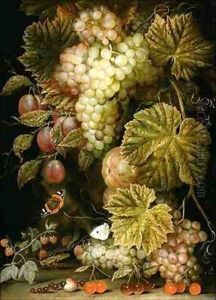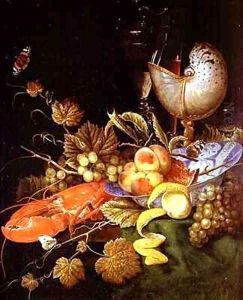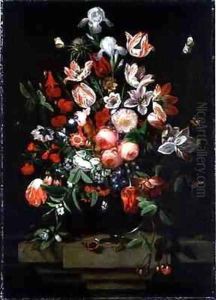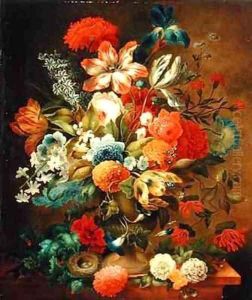Ottmar The Elder Elliger Paintings
Ottmar Elliger the Elder was a notable Flemish still life painter born in Gothenburg, Sweden, in 1633. He is recognized for his intricate and luxurious compositions of flowers and fruits, which reflect the rich Baroque style of the 17th century. Elliger's artistic journey began under the tutelage of his father, who was a respected painter in his own right. Ottmar furthered his artistic education by studying with the prominent still life painter Daniel Seghers in Antwerp, where he honed his skills and developed his distinct style.
Elliger's work is characterized by its vivid colors, attention to detail, and the use of light to create a sense of depth and texture. His paintings often included exotic and rare flowers, which was a testament to the era's fascination with botany and the discovery of new species from around the world. Ottmar's compositions were not only aesthetically pleasing but also symbolic, with flowers and fruits often representing themes such as the transience of life and the passage of time.
In 1660, Elliger moved to Amsterdam, which was a vibrant center for the arts and trade. His work became popular among the wealthy merchant class who appreciated the opulence and exotic nature of his still lifes. During his time in Amsterdam, he collaborated with other artists and contributed to large-scale decorative projects.
Despite his success, Ottmar the Elder's life was relatively short. He passed away in 1679, leaving behind a body of work that continued to influence still life painters in the region. His son, Ottmar Elliger the Younger, also became a painter, although his work was overshadowed by his father's mastery and reputation. Today, Elliger the Elder's paintings can be found in numerous art collections and museums, serving as a testament to his contribution to the Flemish still life genre.
